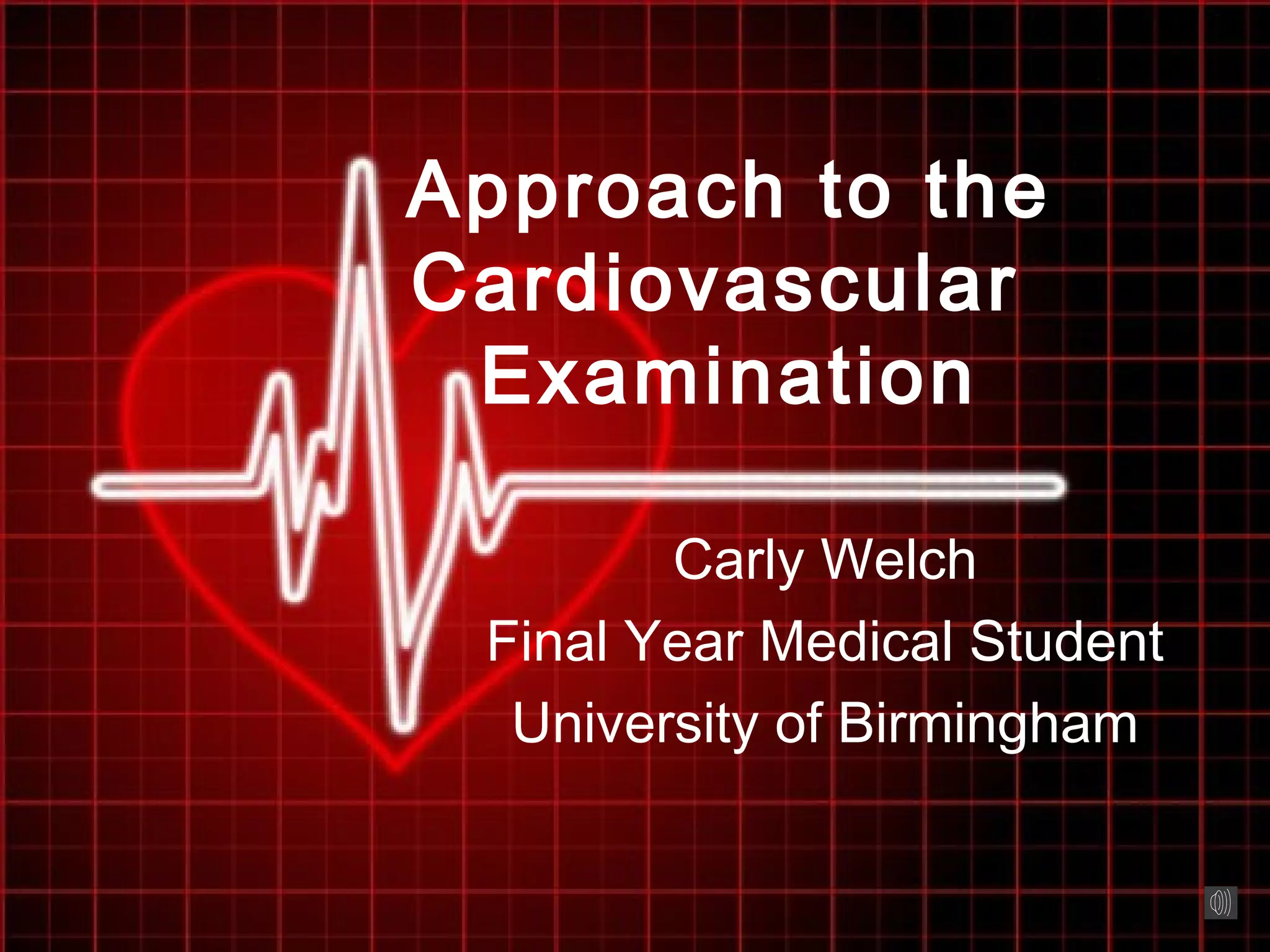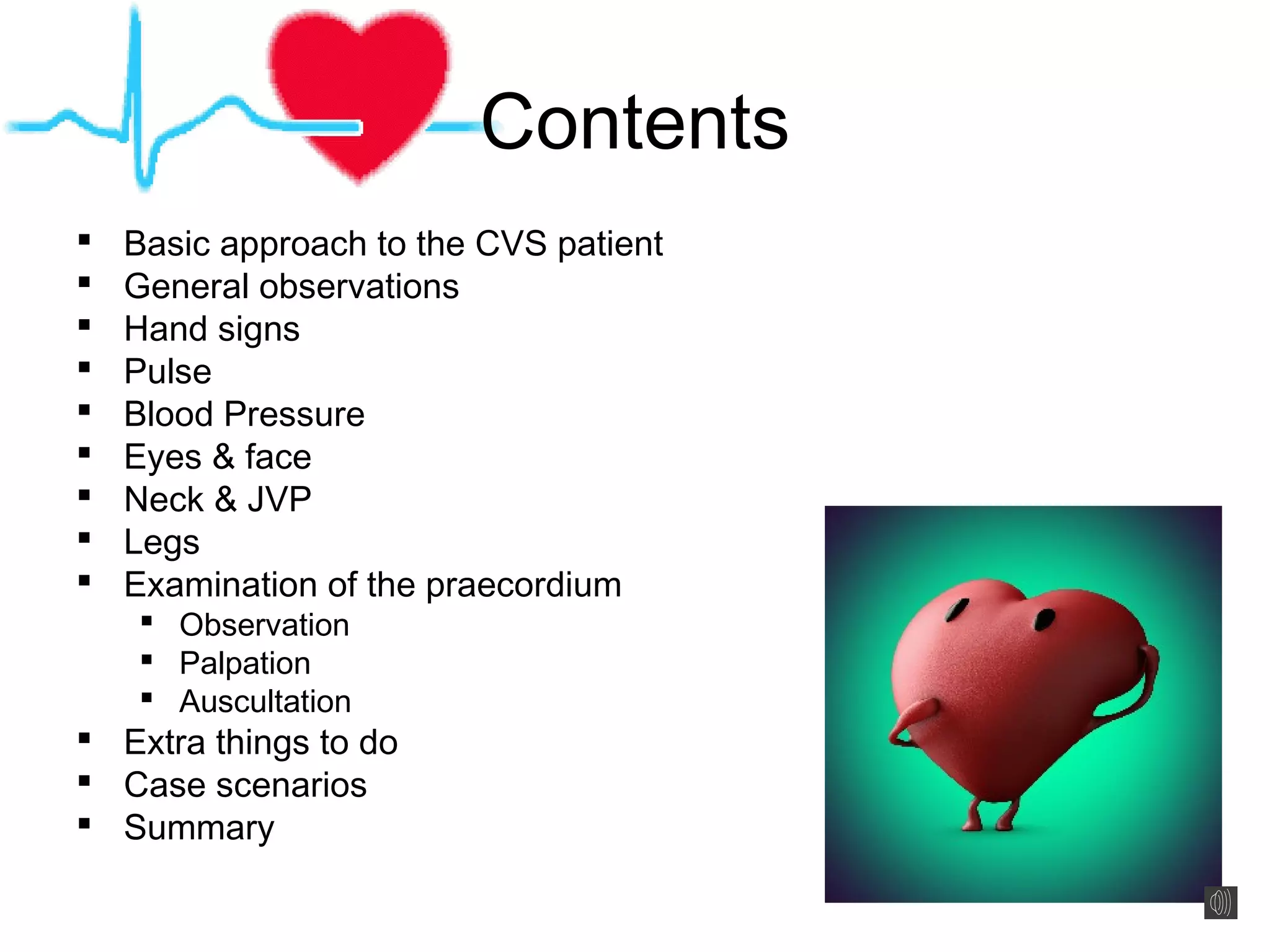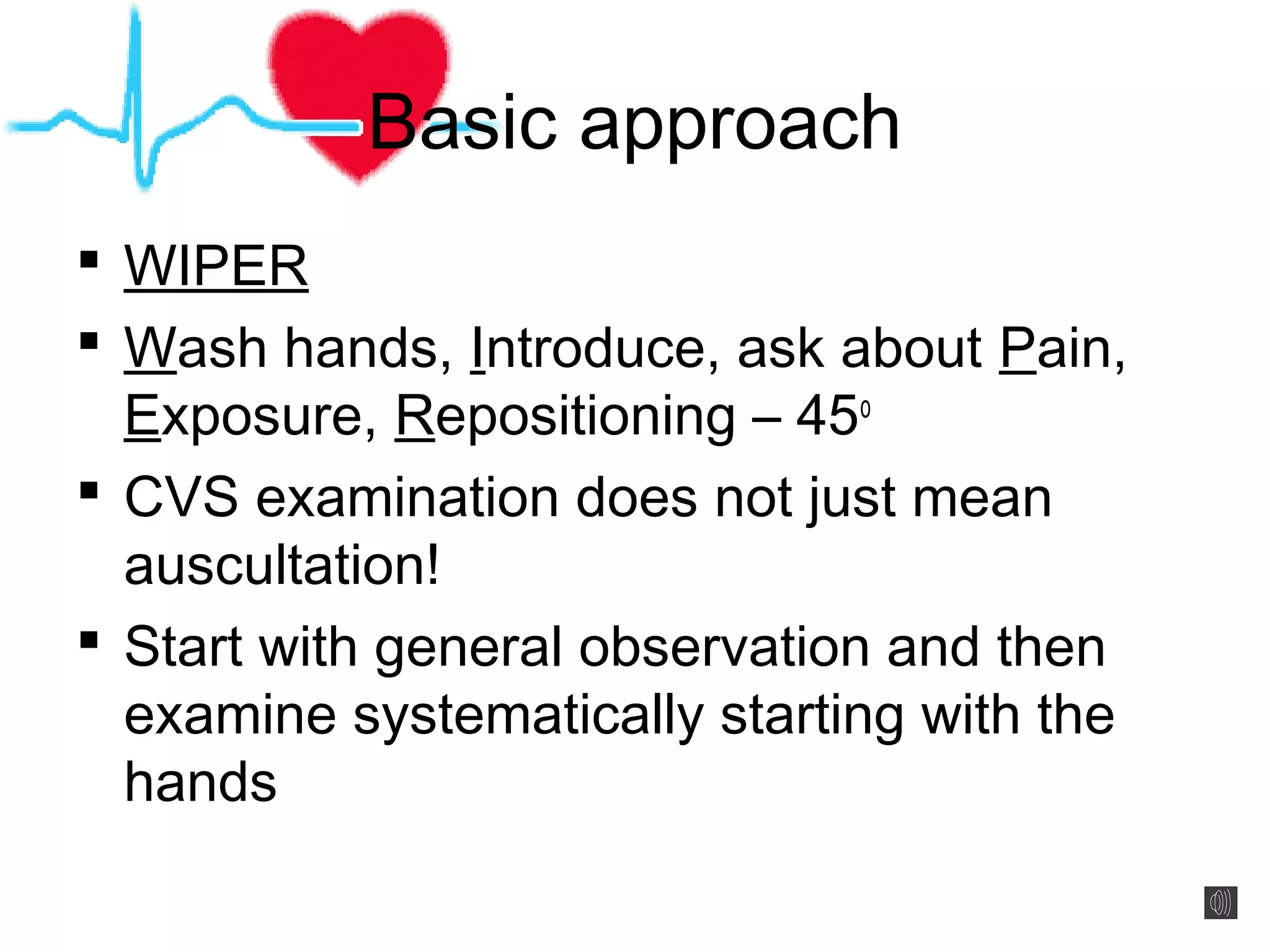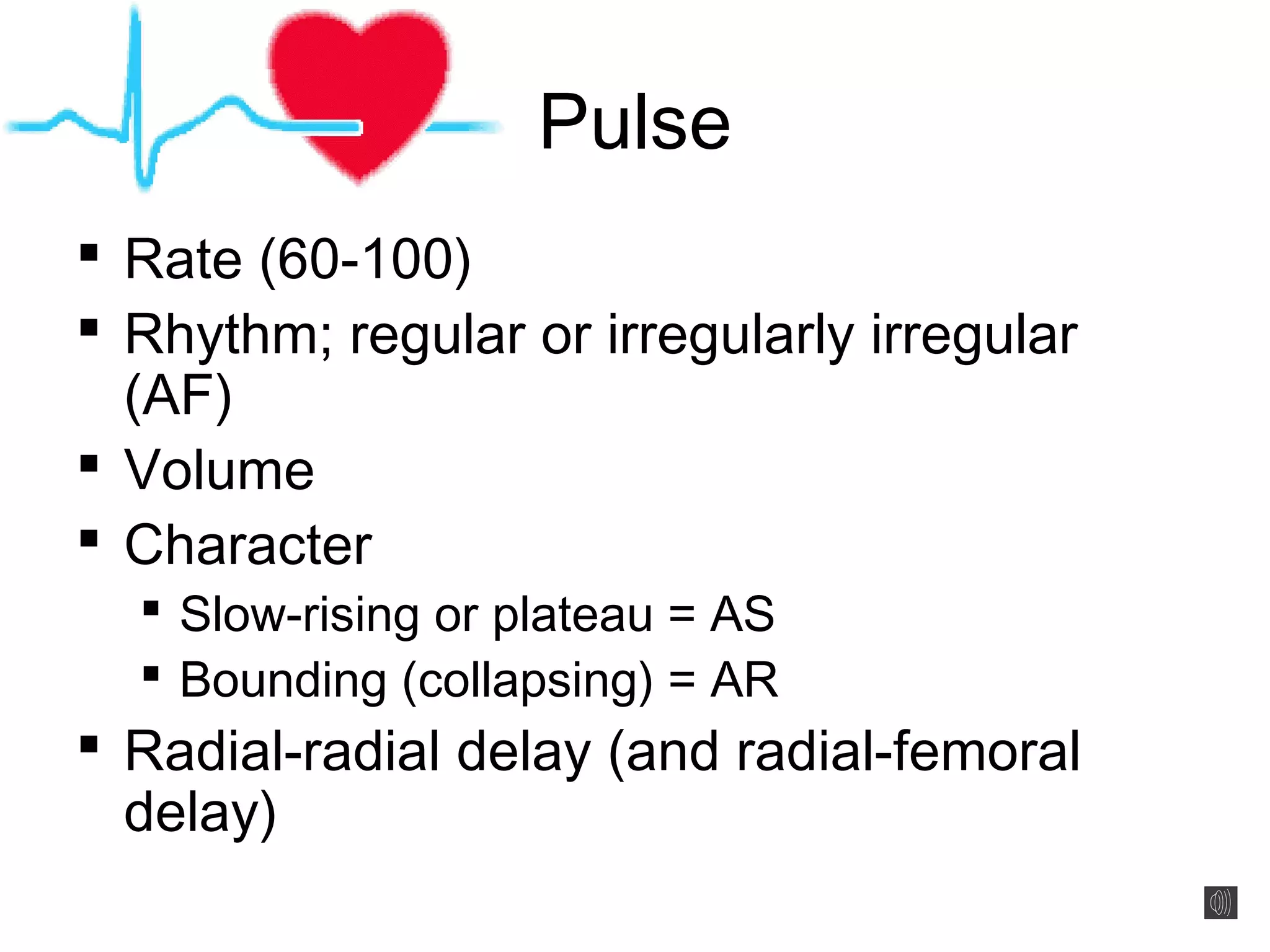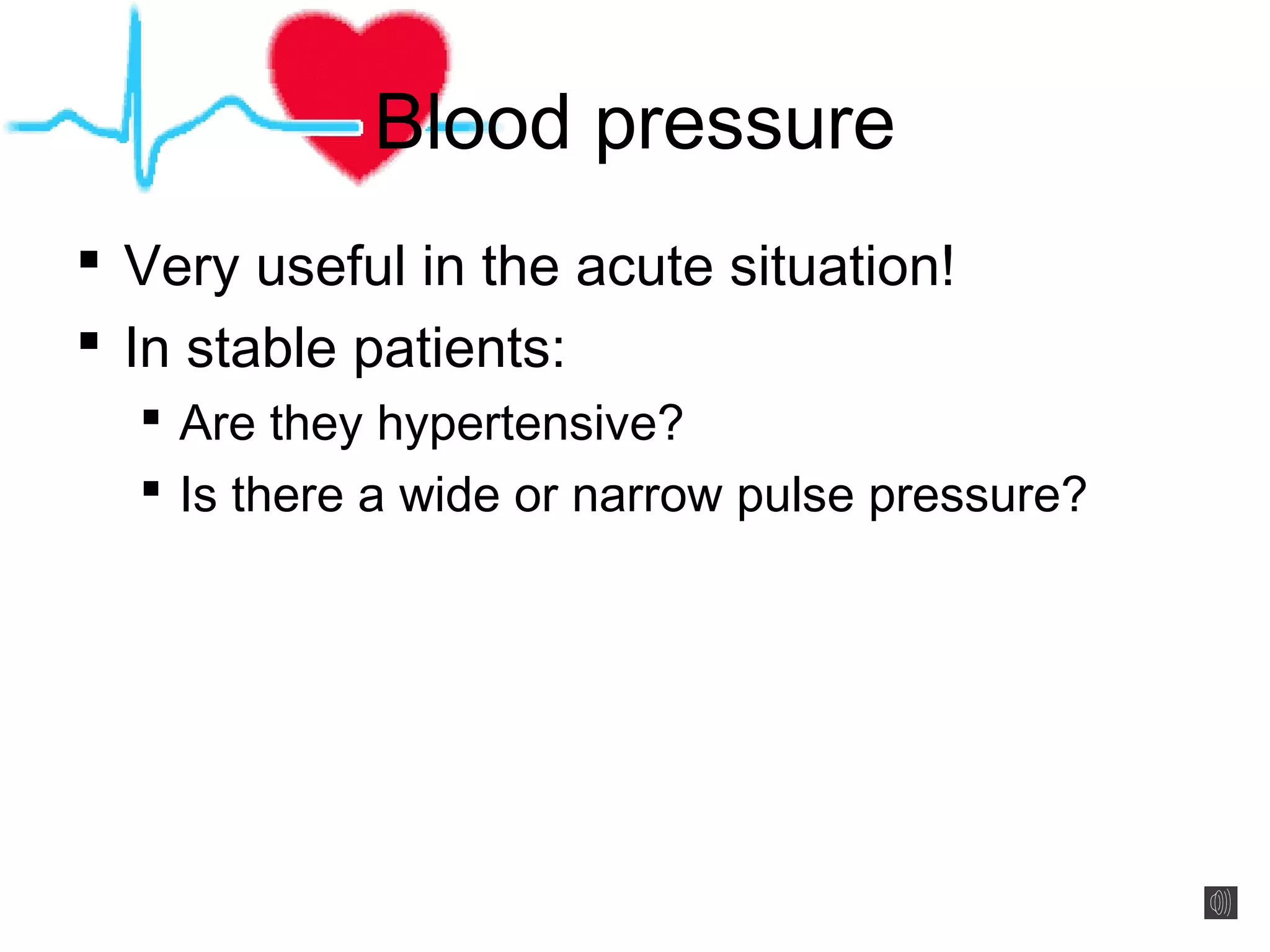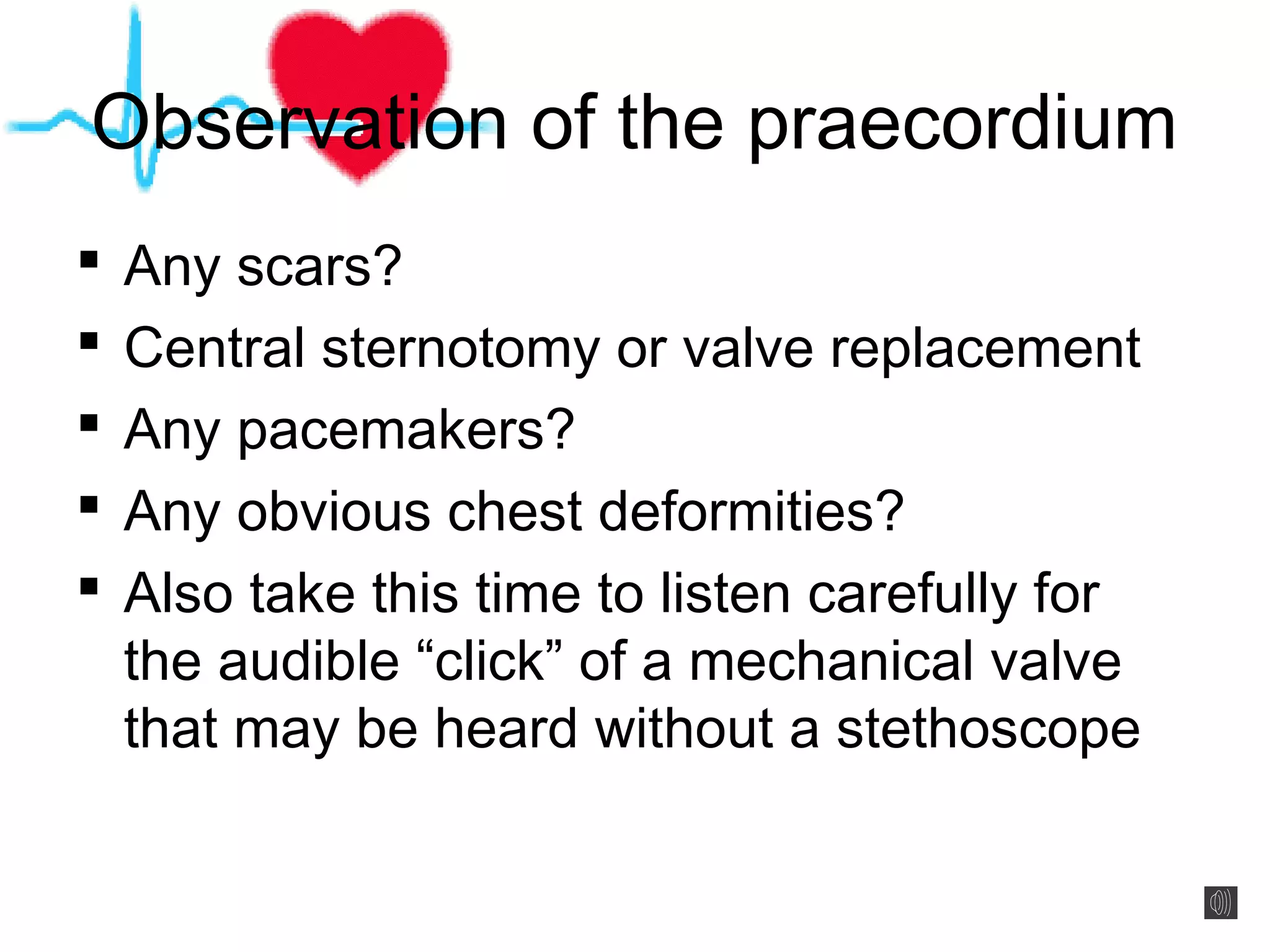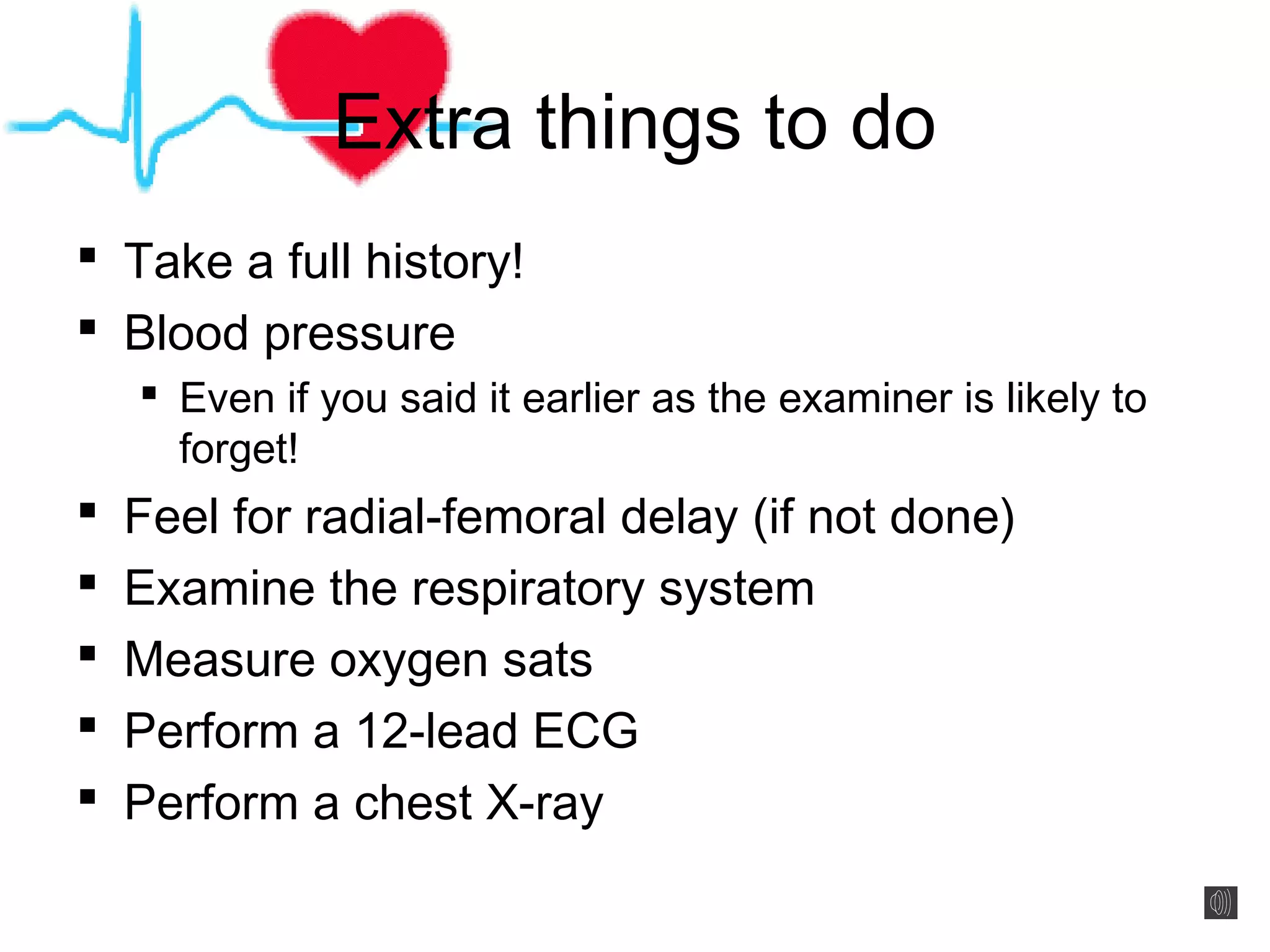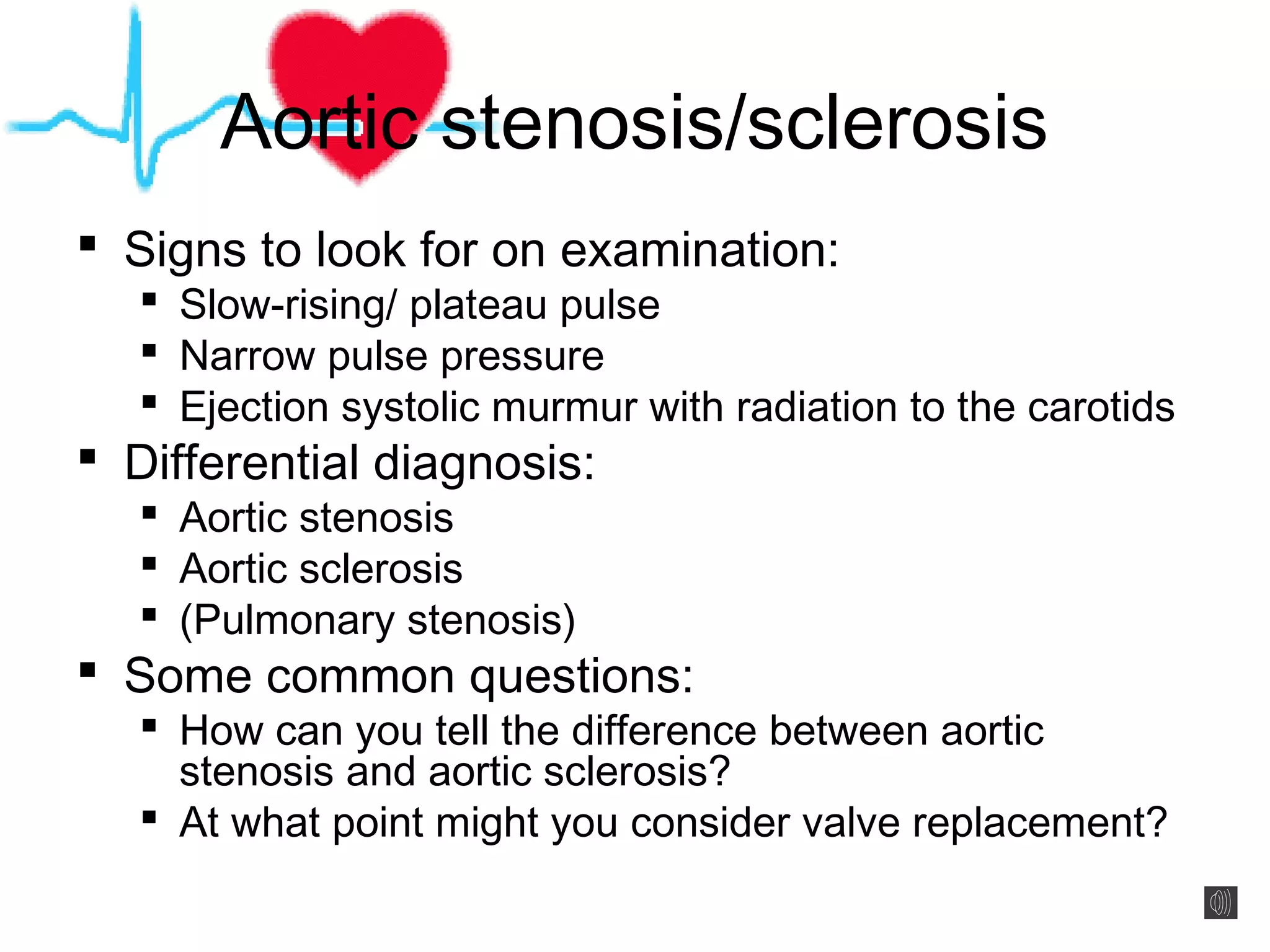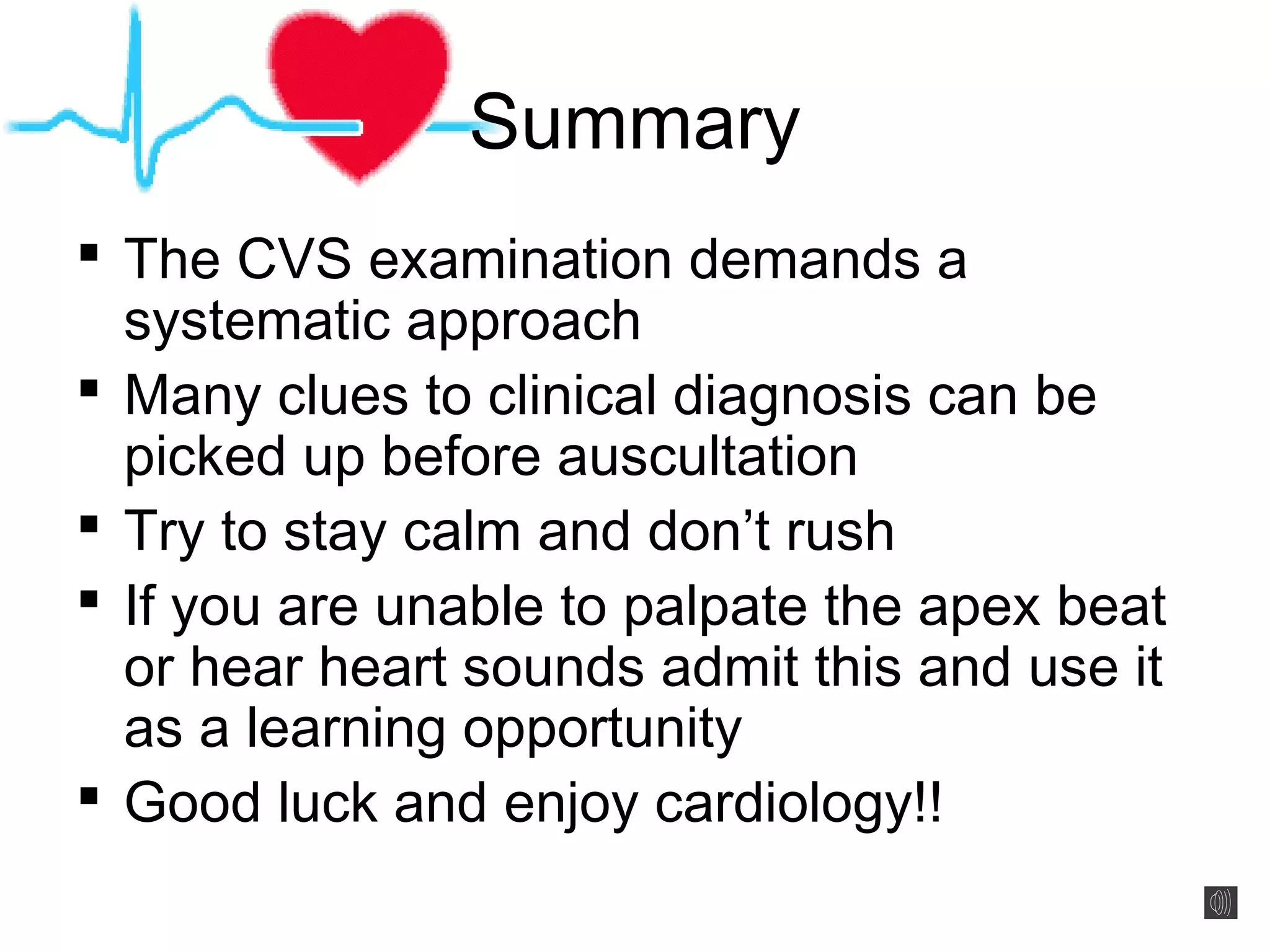This document provides guidance on performing a cardiovascular examination. It outlines the basic approach, including general observations, examination of pulses, blood pressure, eyes/face, neck, legs, and praecordium. Specific techniques are described for palpation, auscultation, and accentuating murmurs. Potential case scenarios involving aortic stenosis, mitral regurgitation, and aortic regurgitation are reviewed. The summary emphasizes performing the exam systematically and using any inability to detect findings as a learning opportunity.
